so beautiful
June 19th update
Mews: Game of Thrones Cat Doppelgaenger

Hi everyone,
I came across this brilliant post on a fellow bloggers website and just had to share it with all of you! howtofangirl took the time of putting together this hilarious line-up of a Game of Throne Cat cast!
As a GoT fan I just had to post about this brilliant work.
Daenerys Targaryen
Anya Stark
Jon Snow

Theon Greyjoy
Margaery Tyrell
Sansa Stark
Tommen Baratheon
Tyrion Lannister
Stannis Baratheon
High Sparrow
Cersei Lannister
Jamie Lannister
Jorah Mormont
Roose Bolton
Bran Stark
Melisandre
Brienne of Tarth
Varys
Bronn
Mance Rayder
Grey Worm
Hodor
Littlefinger
And, last but not least, One of Dany’s Dragons
We hope you enjoyed this post as much as we did and don’t forget to tell us your favourite haha.
Not subscribed to our Newsletter yet? Click here!
Thanks,
Marc
----------
--------------
Prime Minister Stephen Harper and our Laureen- we love our cats and dogs in Canada
------------------
When This Homeless Cat
Sneaks Into A Zoo, I Can’t Stop Smiling


-----------------
God bless our troops always
NOVA SCOTIA Still the place of innocence- Al Rest captured this cat sitting an enjoying the view at Halifax Harbour -coolImage
----------------
je suis Charlie
-------------
데이브 [고양이 키울 때 안 좋은점 - 롤 할 때] Playing League with your cat around
https://www.youtube.com/watch?v=9lxdYVIpM6U
Playing ‘League of Legends’ is way harder with your cat around【Video】

Three things about cats that everyone knows: they are super cute, incredibly contrary, andlove to play League of Legends.
Er… Nope, we didn’t know about that last one either! But as this video of a kitty in South Korea fighting with his owner for screen time shows us, there may be (adorable) downsides to cat ownership we’d never even considered. It turns out, some cats love touchscreen games as much as humans do!
YouTuber Dave from The World of Dave got this tiny rescue kitten from a shelter a few months ago.

He loves to play with toys, chase around pieces of string…and to get between Dave and League of Legends.
▼ “No no no no no no no no…”

▼ HELP!

▼ Wait, is that not what “multiplayer” means…? Perhaps we’ve misunderstood again.

http://en.rocketnews24.com/2015/01/13/playing-league-of-legends-is-way-harder-with-your-cat-around%E3%80%90video%E3%80%91/
------------------
God bless all our Nato troops... and cats and dogs and beautiful creatures-u are loved
-----------
DODGER-
the cat that takes bus and never gets lost-utube
https://www.youtube.com/watch?v=3AwmiH4KGx8
Owner surprised to find cat regularly catches bus
A pet cat named Dodger is living up to his name - by catching free bus
trips from his home town.

Owner surprised to find cat regularly catches bus
A pet cat named Dodger is living up to his name - by catching free bus
trips from his home town.

Artful Dodger hops off the bus near his home in Bridport, Dorset Photo: Peter Willows/BNPS
9:14AM GMT 15 Dec 2011
The ginger moggy, who was named after the Artful Dodger from Oliver
Twist, has taken to hopping on and off the public transport at the bus station
near his home.
The 15-year-old Tom even sits on bemused passengers' laps as the bus
makes up to 10 mile round trips from Bridport to Charmouth in Dorset.
Dodger is such a regular customer that some of the drivers take tins of
cat food to work with them to give to him. They even know what stop to let him
off at.
At the end of his journeys the roving moggy returns to his home and
owner Fee Jeanes.
Mrs Jeanes, 44, believes Dodger first took a liking to the buses as they
are warm like greenhouses when the sun is on them.
But the adventurous pet has since ended up being taken for several
rides.
Mrs Jeanes, 44, said: "We moved here 19 months ago and our house
backs onto the bus station.
"He is an old boy and is very friendly. At first Dodger kept going
to the bus station because people there fed him tit-bits and scraps of food.
"But then he started climbing on board the buses because they are
almost like greenhouses when it is sunny.
"Then last week I found out he had travelled to Charmouth and back,
which is a 10 mile round trip.
"I hadn't seen him all morning until my daughter Emily told me one
of her friends had just seen him on the bus at Charmouth.
"I couldn't believe it and panicked. I got into my car to go off
and look for him and then at that moment the bus pulled up near our house and
low and behold he got off.
"He had fallen asleep on board and nobody knew about it. When the
driver realised he knew who Dodger was and where he lived and kept him on
board.
"That afternoon I saw Dodger climb on board another bus and I
rushed to tell the driver.
"I was shocked when she told me Dodger was always on there and
liked to sit on the seats because they are warm from where people have been
sitting.
"The drivers buy cat food for him and he sits on people's laps.
"Sometimes he just sits in the middle of the road and waits for the
bus to turn up before he gets on."
Dodger is familiar to regular bus passengers and drivers, but Mrs Jeanes
still receives several calls a week asking if she has lost a ginger cat.
A spokesman for bus firm First said they didn't mind Dodger on their buses
but didn't actively encourage him.
He said: "The drivers have been asked not to feed it because we
recognise that cat has an owner and we do not want to discourage it from
returning home for food and shelter, but in principle we do not have a problem
with it being around the bus station.
"Given this cat is elderly we suspect it would be eligible for free
travel, perhaps a bus puss, if such a thing existed."
---
DEXTER- THE DOG WHO SAVED THOUSANDS OF LIVES- NOW A MEMBER OF THE AMERICAN LEGION- A VET IS SAVED....
Dexter the Dog Comes Home a War Hero
Four-legged veteran receives a warm welcome from Legion Post
By Matt Bartosik
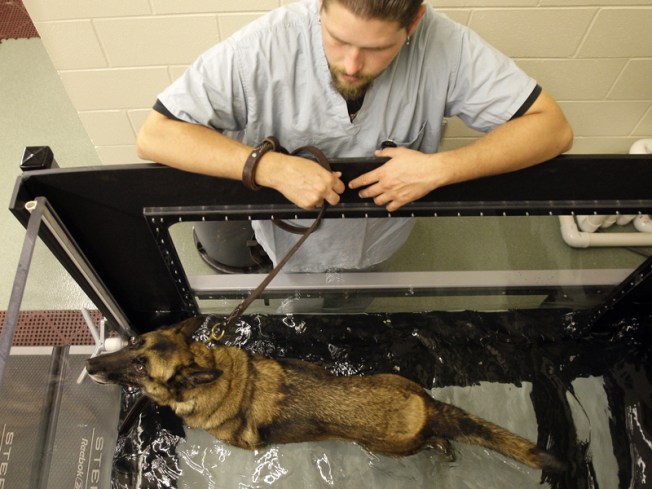 Saturday, Dec 20,
2008 • Updated at 6:46 AM CST
Saturday, Dec 20,
2008 • Updated at 6:46 AM CST
A retiring Iraq war veteran has a long list of accomplishments from
his six years of service. He patrolled the streets of Baghdad, suppressed a
prison riot, and detected explosives on a garbage truck destined to detonate at
an American mess hall, thereby saving hundreds of soldiers' lives.
But what's unique about this
particular military hero is the fact that he has four legs.
Military Working Dog Dexter
CO67—Dexter, for short—will live a relaxed life in the far northern suburb of
Spring Grove, thanks to the military organization saveavet.org.
Dexter almost didn't get to enjoy his
retirement. The military had intended to euthanize the dog because he was
having hip problems, and most military and police dogs cannot be adopted due to
their aggressiveness. Kathleen Ellison, his Navy
handler, pleaded with congressmen to save the canine hero.
Ellison got in contact with Debbie Kandoll, who runs
Military Working Dog Adoptions, who in turn found Iraq vet Danny Scheurer, co-founder
of Save-A-Vet. He worked with similar dogs in his basic infantry unit and has
the experience needed to handle a fellow veteran.
"I wouldn't be here if it
weren't for these dogs," 30-year-old Scheurer told the Sun-Times.
"These dogs saved my life."
Later this month, Kandoll and Ellison
will escort Dexter back to the United States from his base in Naples, Italy.
Once in Spring Grove, he will be welcomed by a public ceremony at Fox Lake
American Legion Post 703, where he will become a full-fledged member.
In fact, John Raughter,
communications director for the American Legion National, told the Lake County News Sun that
no other post has ever admitted a working animal.
"The posts are autonomous. They
don't have to ask us for permission," Raughter said.
Jerry Kandziorski, commander of the
post, feels it is only right to induct Dexter.
"We feel he is a military
veteran. He deserves some recognition of his own," Kandziorski explained.
"He spent six years in Iraq, and he deserves this."
Dexter is scheduled to attend his first meeting in
January.
Source: http://www.nbcchicago.com/news/local/An-Iraq-War-Hero-like-None-Other.html#ixzz3OjylVLpG
Follow us: @nbcchicago on Twitter | nbcchicago on Facebook
----------------
-----------------
Ultimate Dog Tease- 165,267,247
hits
Uploaded on 1 May 2011
---------------
Cute Giant Cat Japanese Commercial (2014)
-------------
Pet
Corner: The mysterious, elegant world of the cat
PAT LEE
Published January 11, 2015 - 2:38pm
Last Updated January 11, 2015 - 4:45pm
Published January 11, 2015 - 2:38pm
Last Updated January 11, 2015 - 4:45pm

The CBC’s Nature of Things will explore the world of the domestic cat in
The Lion in Your Living on Jan. 15 at 8 p.m.
We are a household that enjoys the company of both cats and dogs.
So we’re well versed in the ways of both camps and always interested in
noting the similarities (all miss us when we’re gone, all like a warm ray of
sun, all like to be underfoot at the most inconvenient time) and the
differences (cats hide when company comes, dogs announce all comings and goings
on the street, cats like to start the day a LOT earlier).
SEE ALSO: Adoptable
of the Week Timber
SEE ALSO:
More Pet Corners
While dogs get the flattering label Man’s Best Friend, it’s actually
cats who are the No. 1 pet around the world, including Canada. And, as we know,
cats took over the Internet a long time ago.
The fascinating aspects of domestic cats – who researchers have traced
back some 10,000 years ago to Israel – are the focus of this week’s Nature of
Things, which last year took a look at what makes dogs tick.
Airing Thursday at 8 p.m. on CBC, The Lion in Your Living Room takes a
look at the some of the fascinating aspects of cats that anyone who has had the
privilege of being owned by one will recognize.
For example, their different meows. According to professor Karen McComb
of the University of Sussex in the UK, they have learned to manipulate us
through their cat calls, modulating them to get what they want from us, like
breakfast a 5 a.m. Clever buggers.
Her research also found that owners recognize their own cat’s meows over
another cat.
Of course we all know about purring, but turns out there’s different
kinds of that too. And did you know, that cats who roar don’t purr, and vice
versa?
Another interesting segment looks at a cat’s senses, their superior
sense of smell and sight, as well as their unique ability to jump – to the
annoyance of us at times – as well as, perhaps more impressively, fall.
Carlos Driscoll, the researcher who has traced domestic cats back to
their origin, says the story is that cats became part of our lives for rodent
control, a theory he disputes. He believes they were drawn to humans because of
our garbage, a truth to this day for feral cats.
The opportunistic and companionable feline made its way around the world
aboard ships (did you know the Vikings preferred ginger cats?) to become a
mainstay around the globe.
While it started off with classic brown and black tabby markings, the
cat has evolved to have many looks and markings, thanks to man’s intervention.
As the documentary points out, cats are bred purely for looks, not for
purpose, as are many dogs.
Also interviewed is British biologist John Bradshaw, who has written
extensively on the history and behaviour of cats.
He wades into the controversial waters of domestic cats as predators,
the indoor/outdoor debate and discusses ways humans are changing, not always
for the better, the social structure of cats’ lives.
The documentary, produced by Donna and Daniel Zuckerbrot, who also
brought us the similar look at dogs last year, describes cats as “beautiful,
elegant, mysterious.”
We couldn’t agree more.
Pat Lee is a former editor of www.thechronicleherald and a volunteer at
various rescue organizations, including the Nova Scotia SPCA. Follow her on
Facebook at Pat Lee's Pet Corner.
About the Author
------------------
Check out this BOBCAT in Kentville Nova Scotia area.... seriously... Nova Scotia and animals.... check out the bobcat strolling on it's own as the pheasant continues 2 feast in Dr. MacGregor's Wanda's backyard..... seriously..... Foggy the Whale being saved and Grommet the Whale does the dance of joy at humans releasing our Foggy... and couger sighting... and this month is beautiful Mi'kmaq Month in Nova Scotia.... come visit folks... we'd love 2 have u visit.... oh yeah... are u brave enough 2 visit the pumpkin people around kentville and take part in the pumpking sailing races in Windsor.... and we mean sitting in cleaned out pumpkins and ya gotta build it ur own selves etc. (soooo funny and so much October fun in Nova Scotia friends) and actually racing... hey it's a Nova Scotia thing... and we'd love ta have ya visit. Have a great day friends
---------------
The Evolution of House Cats
Published in Scientific America
KEY CONCEPTS
Unlike other domesticated creatures, the house cat
contributes little to human survival. Researchers
have therefore wondered how and why cats came to live among
people.
Experts traditionally thought that the Egyptians were the
first to domesticate the cat, some 3,600 years
ago.
But recent genetic and archaeological discoveries indicate
that cat domestication began in the Fertile
Crescent, perhaps around 10,000 years ago, when agriculture
was getting under way.
The findings suggest that cats started making themselves
at home around people to take advantage of the mice and food scraps found in their settlements.
It is by turns aloof and affectionate, serene and savage,
endearing and exasperating. Despite its
mercurial nature, however, the house cat is the most popular
pet in the world. A third of
American households have feline members, and more than 600
million cats live among
humans worldwide. Yet as familiar as these creatures are, a
complete understanding of their
origins has proved elusive. Whereas other once wild animals
were domesticated for their milk,
meat, wool or servile labor, cats contribute virtually
nothing in the way of sustenance or work
to human endeavor. How, then, did they become commonplace
fixtures in our homes?
Scholars long believed that the ancient Egyptians were the
first to keep cats as pets, starting
around 3,600 years ago. But genetic and archaeological
discoveries made over the past five
years have revised this scenario—and have generated fresh
insights into both the ancestry of
the house cat and how its relationship with humans evolved.
Cat’s Cradle
The question of where house cats first arose has been
challenging to resolve for several reasons.
Although a number of investigators suspected that all
varieties descend from just one cat
species—Felis silvestris, the wildcat—they could not be
certain. In addition, that species is not
confined to a small corner of the globe. It is represented
by populations living throughout the
Old World—from Scotland to South Africa and from Spain to
Mongolia—and until recently
scientists had no way of determining unequivocally which of
these wildcat populations gave rise
to the tamer, so-called domestic kind. Indeed, as an
alternative to the Egyptian origins
hypothesis, some researchers had even proposed that cat
domestication occurred in a number
of different locations, with each domestication spawning a
different breed. Confounding the
issue was the fact that members of these wildcat groups are
hard to tell apart from one another
and from feral domesticated cats with so-called
mackerel-tabby coats because all of them have
the same pelage pattern of curved stripes and they
interbreed freely with one another, further
blurring population boundaries.
In 2000 one of us (Driscoll) set out to tackle the question
by assembling DNA samples from
some 979 wildcats and domestic cats in southern Africa,
Azerbaijan, Kazakhstan, Mongolia and
the Middle East. Because wildcats typically defend a single
territory for life, he expected that
the genetic composition of wildcat groups would vary across
geography but remain stable over
time, as has occurred in many other cat species. If regional
indigenous groups of these animals
could be distinguished from one another on the basis of
their DNA and if the DNA of domestic
cats more closely resembled that of one of the wildcat
populations, then he would have clear
evidence for where domestication began.
In the genetic analysis, published in 2007, Driscoll,
another of us (O’Brien) and their colleagues
focused on two kinds of DNA that molecular biologists
traditionally examine to differentiate
subgroups of mammal species: DNA from mitochondria, which is
inherited exclusively from
the mother, and short, repetitive sequences of nuclear DNA
known as microsatellites. Using
established computer routines, they assessed the ancestry of
each of the 979 individuals
sampled based on their genetic signatures. Specifically,
they measured how similar each cat’s
DNA was to that of all the other cats and grouped the
animals having similar DNA together.
They then asked whether most of the animals in a group lived
in the same region.
The results revealed five genetic clusters, or lineages, of
wildcats. Four of these lineages
corresponded neatly with four of the known subspecies of
wildcat and dwelled in specific
places: F. silvestris silvestris in Europe, F. s. bieti in
China, F. s. ornata in Central Asia and F. s.
cafra in southern Africa. The fifth lineage, however,
included not only the fifth known
subspecies of wildcat—F. s. lybica in the Middle East—but
also the hundreds of domestic cats
that were sampled, including purebred and mixed-breed
felines from the U.S., the U.K. and
Japan. In fact, genetically, F. s. lybica wildcats collected
in remote deserts of Israel, the United
Arab Emirates and Saudi Arabia were virtually
indistinguishable from domestic cats. That the
domestic cats grouped with F. s. lybica alone among wildcats
meant that domestic cats arose in
a single locale, the Middle East, and not in other places
where wildcats are common.
Once we had figured out where house cats came from, the next
step was to ascertain when they had
become domesticated. Geneticists can often estimate when a
particular evolutionary event occurred
by studying the quantity of random genetic mutations that
accumulate at a steady rate over time. But this so-called molecular clock ticks
a mite too slowly to precisely date events as recent as the past
10,000 years, the likely interval for cat domestication. To
get a bead on when the taming of the cat
began, we turned to the archaeological record. One recent
find has proved especially informative in
this regard.
In 2004 Jean-Denis Vigne of the National Museum of Natural
History in Paris and his colleagues
reported unearthing the earliest evidence suggestive of
humans keeping cats as pets. The discovery
comes from the Mediterranean island of Cyprus, where 9,500
years ago an adult human of unknown
gender was laid to rest in a shallow grave. An assortment of
items accompanied the body—stone
tools, a lump of iron oxide, a handful of seashells and, in
its own tiny grave just 40 centimeters away,
an eight-month-old cat, its body oriented in the same
westward direction as the human’s.
Because cats are not native to most Mediterranean islands,
we know that people must have brought
them over by boat, probably from the adjacent Levantine
coast. Together the transport of cats to the
island and the burial of the human with a cat indicate that
people had a special, intentional
relationship with cats nearly 10,000 years ago in the Middle
East. This locale is consistent with the
geographic origin we arrived at through our genetic
analyses. It appears, then, that cats were being
tamed just as humankind was establishing the first
settlements in the part of the Middle East known
as the Fertile Crescent.
A Cat and Mouse Game?
With the geography and an approximate age of the initial
phases of cat domestication established, we
could begin to revisit the old question of why cats and
humans ever developed a special relationship.
Cats in general are unlikely candidates for domestication.
The ancestors of most domesticated
animals lived in herds or packs with clear dominance
hierarchies. (Humans unwittingly took
advantage of this structure by supplanting the alpha
individual, thus facilitating control of entire
cohesive groups.) These herd animals were already accustomed
to living cheek by jowl, so provided
that food and shelter were plentiful, they adapted easily to
confinement.
Cats, in contrast, are solitary hunters that defend their
home ranges fiercely from other cats of the
same sex (the pride-living lions are the exception to this
rule). Moreover, whereas most domesticates
feed on widely available plant foods, cats are obligate
carnivores, meaning they have a limited ability
to digest anything but meat—a far rarer menu item. In fact,
they have lost the ability to taste sweet
carbohydrates altogether. And as to utility to humans, let
us just say cats do not take instruction well.
Such attributes suggest that whereas other domesticates were
recruited from the wild by humans
who bred them for specific tasks, cats most likely chose to
live among humans because of
opportunities they found for themselves.
Early settlements in the Fertile Crescent between 9,000 and
10,000 years ago, during the Neolithic
period, created a completely new environment for any wild
animals that were sufficiently flexible and
inquisitive (or scared and hungry) to exploit it. The house
mouse, Mus musculus domesticus, was
one such creature. Archaeologists have found remains of this
rodent, which originated in the Indian
subcontinent, among the first human stores of wild grain
from Israel, which date to around 10,000
years ago. The house mice could not compete well with the
local wild mice outside, but by moving
into people’s homes and silos, they thrived.
It is almost certainly the case that these house mice
attracted cats. But the trash heaps on the
outskirts of town were probably just as great a draw,
providing year-round pickings for those felines
resourceful enough to seek them out. Both these food sources
would have encouraged cats to adapt
to living with people; in the lingo of evolutionary biology,
natural selection favored those cats that
were able to cohabitate with humans and thereby gain access
to the trash and mice.
Over time, wildcats more tolerant of living in
human-dominated environments began to proliferate
in villages throughout the Fertile Crescent. Selection in
this new niche would have been principally
for tameness, but competition among cats would also have continued
to influence their evolution and
limit how pliant they became. Because these proto–domestic
cats were undoubtedly mostly left to
fend for themselves, their hunting and scavenging skills
remained sharp. Even today most
domesticated cats are free agents that can easily survive
independently of humans, as evinced by the
plethora of feral cats in cities, towns and countrysides the
world over.
Considering that small cats do little obvious harm, people
probably did not mind their company.
They might have even encouraged the cats to stick around
when they saw them dispatching mice and
snakes. Cats may have held other appeal, too. Some experts
speculate that wildcats just so happened
to possess features that might have preadapted them to
developing a relationship with people. In
particular, these cats have “cute” features—large eyes, a
snub face and a high, round forehead, among
others—that are known to elicit nurturing from humans. In
all likelihood, then, some people took
kittens home simply because they found them adorable and
tamed them, giving cats a first foothold
at the human hearth.
Why was F. s. lybica the only subspecies of wildcat to be
domesticated? Anecdotal evidence suggests
that certain other subspecies, such as the European wildcat
and the Chinese mountain cat, are less
tolerant of people. If so, this trait alone could have
precluded their adoption into homes. The
friendlier southern African and Central Asian wildcats, on
the other hand, might very well have
become domesticated under the right conditions. But F. s.
lybica had the advantage of a head start by
virtue of its proximity to the first settlements. As
agriculture spread out from the Fertile Crescent, so, too, did the tame scions
of F. s. lybica, filling the same niche in each region they entered—and
effectively shutting the door on local wildcat populations.
Had domestic cats from the Near East
never arrived in Africa or Asia, perhaps the indigenous
wildcats in those regions would have been
drawn to homes and villages as urban civilizations
developed.
Rise of the Goddess
We do not know how long the transformation of the Middle
Eastern wildcat into an affectionate
home companion took. Animals can be domesticated quite
rapidly under controlled conditions. In
one famous experiment, begun in 1959, Russian scientists
using highly selective breeding produced
tame silver foxes from wild ones in just 40 years. But
without doors or windowpanes, Neolithic
farmers would have been hard-pressed to control the breeding
of cats even if they wanted to. It
seems reasonable to suggest that the lack of human influence
on breeding and the probable
intermixing of house cats and wildcats militated against
rapid taming, causing the metamorphosis to
occur over thousands of years.
Although the exact timeline of cat domestication remains
uncertain, long-known archaeological
evidence affords some insight into the process. After the
Cypriot find, the next oldest hints of an
association between humans and cats are a feline molar tooth
from an archaeological deposit in
Israel dating to roughly 9,000 years ago and another tooth
from Pakistan dating to around 4,000
years ago.
Testament to full domestication comes from a much later
period. A nearly 3,700-year-old ivory cat
statuette from Israel suggests the cat was a common sight
around homes and villages in the Fertile
Crescent before its introduction to Egypt. This scenario
makes sense, given that all the other
domestic animals (except the donkey) and plants were
introduced to the Nile Valley from the Fertile
Crescent. But it is Egyptian paintings from the so-called
New Kingdom period—Egypt’s golden era,
which began nearly 3,600 years ago—that provide the oldest
known unmistakable depictions of full
domestication. These paintings typically show cats poised
under chairs, sometimes collared or
tethered, and often eating from bowls or feeding on scraps.
The abundance of these illustrations
signifies that cats had become common members of Egyptian
households by this time.
It is in large part as a result of evocative images such as
these that scholars traditionally perceived
ancient Egypt as the locus of cat domestication. Even the
oldest Egyptian representations of wildcats
are 5,000 to 6,000 years younger than the 9,500-year-old
Cypriot burial, however. Although ancient
Egyptian culture cannot claim initial domestication of the
cat among its many achievements, it surely
played a pivotal role in subsequently molding the
domestication dynamic and spreading cats
throughout the world. Indeed, the Egyptians took the love of
cats to a whole new level. By 2,900
years ago the domestic cat had become the official deity of
Egypt in the form of the goddess Bastet,
and house cats were sacrificed, mummified and buried in
great numbers at Bastet’s sacred city,
Bubastis. Measured by the ton, the sheer number of cat
mummies found there indicates that
Egyptians were not just harvesting feral or wild populations
but, for the first time in history, were
actively breeding domestic cats.
Egypt officially prohibited the export of their venerated
cats for centuries. Nevertheless, by 2,500
years ago the animals had made their way to Greece, proving
the inefficacy of export bans. Later,
grain ships sailed directly from Alexandria to destinations
throughout the Roman Empire, and cats
are certain to have been onboard to keep the rats in check.
Thus introduced, cats could have
established colonies in port cities and then fanned out from
there. By 2,000 years ago, when the
Romans were expanding their empire, domestic cats were
traveling with them and becoming
common throughout Europe. Evidence for their spread comes
from the German site of Tofting in
Schleswig, which dates to between the 4th and 10th
centuries, as well as increasing references to cats
in art and literature from that period. (Oddly, domestic
cats seem to have reached the British Isles
before the Romans brought them over—a dispersal that
researchers cannot yet explain.)
Meanwhile, on the opposite side of the globe, domestic cats
had presumably spread to the Orient
almost 2,000 years ago, along well-established trade routes
between Greece and Rome and the Far
East, reaching China by way of Mesopotamia and arriving in
India via land and sea. Then something
interesting happened. Because no native wildcats with which
the newcomers could interbreed lived
in the Far East, the Oriental domestic cats soon began
evolving along their own trajectory. Small,
isolated groups of Oriental domestics gradually acquired
distinctive coat colors and other mutations
through a process known as genetic drift, in which traits
that are neither beneficial nor maladaptive
become fixed in a population.
This drift led to the emergence of the Korat, the Siamese,
the Birman and other “natural breeds,”
which were described by Thai Buddhist monks in a book called
the Tamara Maew (meaning “CatBook Poems”) that may date back to 1350. The putative antiquity
of these breeds received support from the results of genetic studies announced last year, in
which Marilyn Menotti-Raymond of the National Cancer Institute and Leslie Lyons of the University
of California, Davis, found DNA
differences between today’s European and Oriental domestic
cat breeds indicative of more than 700
years of independent cat breeding in Asia and Europe.
As to when house cats reached the Americas, little is known.
Christopher Columbus and other
seafarers of his day reportedly carried cats with them on
transatlantic voyages. And voyagers
onboard the Mayflower and residents of Jamestown are said to
have brought cats with them to control vermin and to bring good luck. How house
cats got to Australia is even murkier, although
researchers presume that they arrived with European
explorers in the 1600s. Our group at the U.S.
National Institutes of Health is tackling the problem using
DNA.
Breeding for Beauty
Although humans might have played some minor role in the
development of the natural breeds in
the Orient, concerted efforts to produce novel breeds did
not begin until relatively recently. Even the
Egyptians, who we know were breeding cats extensively, do
not seem to have been selecting for
visible traits, probably because distinctive variants had
not yet arisen: in their paintings, both
wildcats and house cats are depicted as having the same
mackerel-tabby coat. Experts believe that
most of the modern breeds were developed in the British
Isles in the 19th century, based on the
writings of English natural history artist Harrison Weir.
And in 1871 the first proper fancy cat
breeds—breeds created by humans to achieve a particular
appearance—were displayed at a cat show
held at the Crystal Palace in London (a Persian won,
although the Siamese was a sensation).
Today the Cat Fancier’s Association and the International
Cat Association recognize nearly 60 breeds
of domestic cat. Just a dozen or so genes account for the
differences in coat color, fur length and
texture, as well as other, subtler coat characteristics,
such as shading and shimmer, among these
breeds.
Thanks to the sequencing of the entire genome of an
Abyssinian cat named Cinnamon in 2007,
geneticists are rapidly identifying the mutations that
produce such traits as tabby patterning, black,
white and orange coloring, long hair and many others. Beyond
differences in the pelage-related
genes, however, the genetic variation between domestic cat
breeds is very slight—comparable to that
seen between adjacent human populations, such as the French
and the Italians.
The wide range of sizes, shapes and temperaments seen in
dogs—consider the Chihuahua and Great
Dane—is absent in cats. Felines show much less variety
because, unlike dogs—which starting in
prehistoric times were bred for such tasks as guarding,
hunting and herding—wildcats were under no
such selective breeding pressures. To enter our homes, they
had only to evolve a people-friendly
disposition.
So are today’s cats truly domesticated? Well, yes—but
perhaps only just. Although they satisfy the
criterion of tolerating people, most domestic cats are feral
and do not rely on people to feed them or
to find them mates. And whereas other domesticates, like
dogs, look quite distinct from their wild
ancestors, the average domestic cat largely retains the wild
body plan. It does exhibit a few morphological differences, however—namely,
slightly shorter legs, a smaller brain and, as Charl les
Darwin noted, a longer intestine, which may have been an
adaptation to scavenging kitchen scraps.
The house cat has not stopped evolving, though—far from it.
Armed with artificial insemination and
in vitro fertilization technology, cat breeders today are
pushing domestic cat genetics into uncharted
territory: they are hybridizing house cats with other felid
species to create exotic new breeds. The
Bengal and the Caracat, for example, resulted from crossing
the house cat with the Asian leopard cat
and the caracal, respectively. The domestic cat may thus be
on the verge of an unprecedented and
radical evolution into a multispecies composite whose future
can only be imagined.
The Truth about Cats and Dogs
Unlike dogs, which exhibit a huge range of sizes, shapes and
temperaments, house cats are relatively
homogeneous, differing mostly in the characteristics of
their coats. The reason for the relative lack of
variability in cats is simple: humans have long bred dogs to
assist with particular tasks, such as
hunting or sled pulling, but cats, which lack any inclination
for performing most tasks that would be
useful to humans, experienced no such selective breeding
pressures.
Note: This article was originally published with the title,
"The Taming of the Cat".
ABOUT THE AUTHOR(S)
Carlos A. Driscoll is a member of the University of Oxford's
Wildlife Conservation Research Unit and the Laboratory of
Genomic Diversity at the National Cancer Institute (NCI). In
2007 he published the first DNA-based family tree of Felis
silvestris, the species to which the domestic cat belongs.
Juliet Clutton-Brock, founder of the International Council for
Archaeozoology, is a pioneer in the study of domestication
and early agriculture. Andrew C. Kitchener is principal curator of
mammals and birds at National Museums Scotland, where he
studies geographical variation and hybridization in mammals
and birds. Stephen J. O'Brien is chief of the NCI's
Laboratory of Genomic Diversity. He has studied the genetics of cheetahs,
lions, orangutans, pandas, humpback whales and HIV. This is
his fifth article for Scientific American.
----------------
The Natural History of the Cat
Origins of the Domestic Cat
Cats began their unique relationship with humans 10,000 to
12,000 years ago in the Fertile Crescent, the geographic region where some of
the earliest developments in human civilization occurred (encompassing modern
day parts of West Asia). One such development was agriculture. As people
abandoned their nomadic lifestyle and settled permanently to farm the land,
stored grain attracted rodents. Taking advantage of this new, abundant food
source, Middle Eastern wildcats, or felix
silvestris lybica, preyed on the rodents and decided to stick
around these early towns, scavenging the garbage that all human societies
inevitably produce—just as feral cats do today.
Over thousands of years, a new species of cat eventually evolved
that naturally made its home around people: felis
catus. Today, pet, stray, and feral cats belong to this species
that we call the domestic cat.1
Cats Travel the World
Cats formed a mutually beneficial relationship with people, and
some scientists argue that cats domesticated themselves.2 Especially
prized as mousers on ships, cats traveled with people around the globe:
- A burial site in
Cyprus provides the first archaeological evidence of humans and cats
living side-by-side, as far back as 9500 BC. Cats must have been brought
to the island intentionally by humans.3
- In ancient
Egypt, cats were worshipped, mummified, and—artwork suggests—kept on
leashes as part of the cult of the goddess Bastet.
- In 31 BC, Egypt
became a province of the Roman Empire. Cats were introduced into Roman
life, becoming truly widespread in Europe around the 4th century AD.4
A cat skeleton from this period shows the shortened skull of domestic cats
today.5
- From Europe,
cats boarded ships to the Americas, reportedly tagging along with
Christopher Columbus, with the settlers at Jamestown, and aboard the Mayflower.
- In Europe, Sir
Isaac Newton is rumored to have invented the cat door in the late 17th or
early 18th century.
- Cats continued
their service as mousers throughout history, even serving as official
employees of the United States Postal Service as late as 19th and early
20th century America.6
- Towards the end
of the 19th century, more Americans began to keep cats for their company
as well as their utility. The first cat show was held at Madison Square
Garden in 1895. By the end of World War I, cats were commonly accepted as
house pets in the U.S.
Throughout all this time, cats were allowed to come and go
freely from human households—even President Calvin Coolidge’s cat had free rein
to wander to and from the White House during the 1920s. As Sam Stall, author of
100 Cats Who Changed Civilization
and The Cat Owner’s Manual,
writes, “Back in Coolidge’s day no one thought of confining cats indoors—not
even one belonging to the president of the United States.”7
Catering to Cats: Inventing
the Indoor Cat
Keeping cats indoors all the time was not possible—nor was it
even a goal—until several important 20th century innovations: refrigeration,
kitty litter, and the prevalence of spaying and neutering.
Even though these changes to our modern lifestyle make keeping
cats inside possible, biologically, cats are the same as they were thousands of
years ago. Their role in our society has evolved and broadened over the last
hundred years, but their basic behaviors and needs haven’t changed.
Cat Food
Unlike dogs, who have undergone many physical changes since
domestication and evolved to survive on an omnivorous diet, cats haven’t
changed much, and still require a high-protein diet. Before the development of
refrigeration and canned cat food in the 20th century, feeding indoor cats who
could not supplement their diets by hunting would have been impossible for most
Americans, who could not afford extra fresh meat or fish.8
Kitty Litter
Up until the 1950s, cats roamed American neighborhoods freely,
using the great outdoors as their litter area. Pans filled with dirt or
newspaper were used indoors by a few cat owners, but it wasn’t until the first
clay litter was accidentally discovered in 1947 and the subsequent marketing of
the Tidy Cats® brand in the 1960s that litter boxes really caught on. With the
invention of cat litter, cats rocketed to popularity as indoor pets, but their
outdoor survival skills remain.9
Spaying and Neutering
Until spaying and neutering pets became available and accessible
around the 1930s, keeping intact cats indoors was messy business during mating
season. Techniques had been developed for sterilizing livestock, but American
households would have had a hard time finding a veterinarian trained to safely
neuter pets before this time.10 Just as cats found their own food
and litter areas outdoors, 20th century cats bred and gave birth outdoors as
they have done since their origins in the Fertile Crescent 10,000 years ago.
While some of those cats’ offspring have since been brought indoors through
neutering and other modern developments, many cats stayed outside, living the
same outdoor lives they always have, with or without human contact. Although
adult feral cats—cats that are not socialized to people—cannot become indoor
pets, neutering and returning them to their outdoor home improves their lives.
Cats are Part of Our
Environment
In the thousands of years that cats have lived alongside people,
indoor-only cats have only become common in the last 50 or 60 years—a
negligible amount of time on an evolutionary scale.
Throughout human history, cats have always lived and thrived
outside. It is only recently that we have begun to introduce reproduction
control like spaying and neutering to bring them indoors. And also, bring the
outdoors to them: using canned food and litter boxes to satisfy biological
needs developed over thousands of years of living outdoors.
Although human civilization and domestic cats co-evolved side by
side, the feral cat population was not created by humans. Cats have lived
outdoors for a long time—they are not new to the environment and they didn’t
simply originate from lost pets or negligent pet owners. Instead, they have a
place in the natural landscape.
[1] Driscoll, Carlos A. et al. “The Taming of the Cat.” Scientific American
(2009): 71-72.
[2] Ibid.
[3] Ibid.
[4] Donalson, Malcolm Drew. The Domestic Cat in Roman Civilization. The Edwin Mellen Press, Lewiston, New York: 1999.
[5] Ibid.
[6] Weir, Harrison. Our Cats and All About Them. Fanciers’ Gazette, London: 1892.
[7] Stall, Sam. 100 Cats Who Changed Civilization. Quirk Books, Philadelphia: 2007.
[8] Bradshaw, John W.S., The Evolutionary Basis for the Feeding Behavior of Domestic Dogs (Canis familiaris) and Cats (Felis catus), 136(7) J Nutrition (2006).
[9] Rainbolt, Dusty. “The Best Idea,” Cat Fancy. (August 2010): 30-31.
[10] Grier, Katherine C. Pets in America: A History. University of North Carolina Press, Chapel Hill: 2006.
[2] Ibid.
[3] Ibid.
[4] Donalson, Malcolm Drew. The Domestic Cat in Roman Civilization. The Edwin Mellen Press, Lewiston, New York: 1999.
[5] Ibid.
[6] Weir, Harrison. Our Cats and All About Them. Fanciers’ Gazette, London: 1892.
[7] Stall, Sam. 100 Cats Who Changed Civilization. Quirk Books, Philadelphia: 2007.
[8] Bradshaw, John W.S., The Evolutionary Basis for the Feeding Behavior of Domestic Dogs (Canis familiaris) and Cats (Felis catus), 136(7) J Nutrition (2006).
[9] Rainbolt, Dusty. “The Best Idea,” Cat Fancy. (August 2010): 30-31.
[10] Grier, Katherine C. Pets in America: A History. University of North Carolina Press, Chapel Hill: 2006.
-------------------
dilliaisrael.blogspot.com/2010_05_01_archive.html Cached
May 26, 2010 · Begins with the covenant between God and
Abraham around 1812 BC (over 3,800 years ago) ... Judaism originated
in Israel around 4.000,00 years ago. Founder
-------------------
House Cat Origin Traced to Middle Eastern
Wildcat Ancestor
Brian Handwerk
for National Geographic News
for National Geographic News
June 28, 2007
Cat fanciers
have long known that their feline friends have wild origins.
Now
scientists have identified the house cat's
maternal ancestors and traced them back to the Fertile Crescent.

The Near
Eastern wildcat still roams the deserts of Israel, Saudi Arabia, and other
Middle Eastern countries. (See map.)
Between 70,000 and 100,000 years ago the animal gave rise to the genetic
lineage that eventually produced all domesticated cats.
"It's
plausible that the ancient [domestic cat] lineages were present in the wildcat
populations back as far as 70,000 or 100,000 years ago," said study
co-author Stephen O'Brien of the National Cancer Institute in Frederick,
Maryland.
The
wildcats may have been captured around 10,000 or 12,000 years ago when humans
were settling down to farming, he added.
"One
of nearly 40 wild cat species existing at that time, the little wildcat that
lived in the Middle East had a genetic variance that allowed it to sort of try
an experiment—let's walk in and see if we can get along with those
people," O'Brien said.
One Hell
of an Experiment
A
research team led by geneticist Carlos Driscoll of the National Cancer
Institute and scientists at the University of Oxford in England found five
matriarchal lineages to which modern domestic cats belong.
"This
tells us that domestic cats were sort of widely recruited, probably over time
and space," Driscoll said.
But
people probably weren't going out and catching—or herding—cats.
"The
cats just sort of domesticated themselves. People today know that you can't
keep a cat inside [without barriers], and 10,000 years ago in the Fertile
Crescent you couldn't just shut the window."
Farmers
were likely the first to domesticate wildcats. The animals may have been
helpful in hunting mice and other pests that plagued farm fields in the early
human settlements, which had just sprang from the first agricultural
development.
Agriculture led to cities and towns, as well as a
new ecological environment that cats were able to exploit.
There are some 600
million house cats around the world, study co-author O'Brien added.
"Domestication
was one hell of a successful natural experiment."
Cats on the Move
Once the formerly
wild felines became household companions, the same cats appear to have
accompanied human tribes as they gradually migrated and spread throughout the
ancient world. (Check out our
ancestors' journey through the Fertile Crescent.)
"It's sort of
analogous to the 'out of Africa' theory that people talk about for
humans," Driscoll said. "In the same way, domestic cats from Europe
are really the same as domestic cats from Israel or China or wherever."
The earliest
archaeological evidence for domestic cats has been found in Cyprus and dates
back approximately 9,500 years.
(Read: "Oldest
Known Pet Cat? 9,500-Year-Old Burial Found on Cyprus" [April 8,
2004].)
Cat studies of all
types are hindered by the many physical and behavioral similarities between
domestic cats and their wild relatives. In fact, it is often difficult or
impossible for even the trained eye to tell them apart, and interbreeding has
created many hybrids of the two.
Genetic Clues
Driscoll's study
began because genetics may be one of the only ways to determine which cats are
truly wild. His group managed to successfully herd about a thousand wild and
domestic cats and sample their DNA to produce the genetic study, which will
appear in tomorrow's issue of the journal Science.
In search of cats'
wild ancestor, the team studied modern wildcat subspecies including the Near
Eastern wildcat, the European wildcat, the Central Asian wildcat, the southern
African wildcat, and the Chinese desert cat.
The sampling of
feline genes revealed that the Near Eastern wildcat and domestic cats fell into
the same genetic clade, a group of species with the same ancestor. This meant
the ancient ancestors of the wildcats were likely the first cats to be
domesticated.
The genetic diversity
of living cats revealed that they must have existed for some 70,000 to 100,000
years to produce that degree of diversity.
--------------------
Jewish Foods:
Dining in the Holy Land - 2000 Years Ago
Dining in the Holy Land - 2000 Years Ago
by Daniel Rogov
Jewish Foods: Table of Contents | Holiday Foods | Israeli Foods
Regardless of whether the
cultural and religious lives of people are governed by the Hebrew, Islamic,
Greek, Russian or Armenian Orthodox, Buddhist or Vietnamese calendars,
many public events the world over are determined by the Gregorian Calendar. As
is well known, in accordance with that calendar, the new year starts on January
1st, and is celebrated primarily on the night of December 31st. The
celebrations for this year were special, for in addition to marking the end of
a century, we celebrated the beginning of a new millennium. What is not so well
known about the celebrations that mark the end of a year (or a millennium), is
that this phenomenon has long been a sore point among the members of the clergy
of nearly all the faiths, who all agree that the roots of New Year's Eve
celebrations are distinctly pagan in nature.
As long ago as 500 BCE,
Romans believed that loudness, lewdness and at least a modicum of drunkenness
were necessary to celebrate the onset of the new year. It was thought that such
behavior would confuse Pan and the other malicious gods, thus preventing them
from interfering in the everyday lives of mortals for the year to come. Half a
millennium later, the Goths adopted a similar belief, thinking that such
behavior on the eve of the new year was a sure way to frighten away any evil
demons that might be left over from the year that had passed.
January 1st has not always marked
the onset of the year. Because the ancient Romans
began their year in March (more for the convenience of the tax collectors than
out of respect to the motion of the planets), such words as September, October,
November and December, meaning the 7th, 8th, 9th and 10th months, had a
rational meaning. In fact, only since the reform of the calendar in the 16th
century, has January 1st been accepted as New Year's Day.
Nor has the onset of the new year
always implied celebrations, promises and hopes for the future. Since the time
of the ancient Greeks,
the first day of the year has been considered by many to be the most
appropriate day of the year for bribing local officials. Even today in some
parts of the world, it is considered appropriate for wealthy citizens (or their
servants), owners of small businesses and other local entrepreneurs to call on
local officials to pay their respects and to share a cup of coffee or tea as a
token of goodwill. In France,
perhaps as an offshoot of this tradition, adults enjoy exchanging gifts on
January 1st.
There are other names given to
the last night of the year, the origins of which are unclear. Even though
Europeans (and some Israelis and North Americans in recent years) have come to
know the night of December 31st as 'Sylvester', this appelation is relatively
new, having its roots in 18th century France. Whether the Sylvester in question
is an otherwise obscure French saint, the Roman-Catholic pope who is said to
have brought a dead bull back to life or the maiden name of the mother of Dom
Perignon, the man who discovered the process of making sparkling Champagne, is
not known.
Whatever, the third millennium
has arrived and from the culinary point of view, it is interesting to look back
and examine the dining habits of people in the Holy Land 2,000 years ago.
Before we begin our voyage, keep in mind that the people who lived in
Jerusalem, Jericho and other places in the Holy Land two millennia ago dined
quite well. In addition to having excellent markets filled with fresh
vegetables, fruit, poultry, lamb and fish, the narrow streets of the ancient
cities were lined with numerous stalls where vendors sold fried fish, pickled
cucumbers and freshly grilled meats. Moreover, the roads from Jerusalem
to Jericho
and from Hebron
to Jaffa
were lined with stands where grilled lamb, pickled watermelon rind and cakes
made from chickpeas were readily available. Whether for at-home dining or while
travelling on the road, hungry men and women had no problem finding good things
to eat. What may surprise us is that many of the dishes prepared then are
marvelously appropriate even today, especially for celebrating the end of one
millennium and the beginning of another.
The Best Known of
All Meals
In addition to having been
recorded in the New
Testament by Saints Mark and Matthew, "The Last Supper," the last
meal shared by Jesus
and the twelve disciples, has also been immortalized by dozens of well known
artists. The best known representation of that meal is probably the fresco
painted by Leonardo da Vinci between 1495 - 1498 on the wall of the Monastery
of Santa Maria delle Grazie in Milan.
Da Vinci was not the only artist
who tried to capture the mood and meaning of this meal. In addition to
frescoes, paintings and etchings by Raphael, Titian, Correggio, Tintoretto,
Rembrandt and Salvadore Dali, the last public meal of Jesus has also been
portrayed in hundreds of 5th and 6th century Byzantine mosaics, in a 13th
century bas relief on the eastern transept of the Cathedral in Strasbourg, and
in a 15th century bronze relief by Donatello, found in the church of San
Giovanni in Siena.
Even though Jesus' last supper is
one of the most frequently portrayed religious events in history, no one is absolutely
sure what was eaten at that meal. Although it is impossible to know precisely
what dishes were served, both the New Testament and historical records give us
many clues. According to the New Testament (Matthew
26 and Mark
14), the meal was intended to celebrate Passover,
and both accounts agree that two of Jesus' disciples had come to Jerusalem
in order to find a home in which Jesus could enjoy the Seder. The year was
probably 33 CE,
and even then the holiday was a commemoration of the Hebrews' freedom from
slavery in ancient Egypt nearly two thousand years before Jesus was born.
There is no reason to believe that
the meal upon which Jesus dined would have been different than that enjoyed by
other Jews at the onset of this first millennium. Thus, matzot (unleavened
bread), a pitcher of wine, salted water and a small bowl of marror (bitter
herbs) would have been on the table. Because in Jesus' time the holiday also
marked the time of the early spring harvest, the table may have been decorated
with fresh fruit, green almonds and walnuts as well as sprigs of freshly picked
herbs such as thyme, rosemary and coriander.
As was the case in nearly all
Jewish homes of that time, when Jesus and his disciples sat down, they would
have found the table already set with all the foods of the meal. In addition to
the serving plates that held the food and the goblets for the wine, little else
would have been on the table. Napkins were not yet in use and the fork had not
yet been invented. Each guest would have brought his own knife for cutting
meat, but most of the eating would have been done by hand. Because this made
for sticky fingers, servants were available to offer bowls of water in which
the guests could occasionally clean their fingers.
Between the 1st and 3rd
centuries, it was traditional in all homes to start with a simple vegetable
soup. The contents of the second course, however, were determined largely by
the economic status of the host. Because Jesus was an honored guest, the owner
of the home in which this particular meal was served would have been sure to
have prepared roast lamb, the most highly-valued of dishes. It was not
traditional to serve a dessert course, but celebratory meals such as this came
to an end after the guests ate the fresh fruit and nuts that had been put on
the table for decorations.
Apples and Excesses
The Romans
who occupied the Holy Land at the onset of the first millennium were not quite
as moderate or decorous in their personal behavior or dining habits as was the
native population. It is well known, for example, that in 40 BCE, when Herod
fled from Jerusalem
to escape from Antigonus II (Mattathias) who had been made king by the
Parthians, he went to the high hill of Masada.
What is not so broadly known is that Herod
made his safe home into one of the most luxurious palaces ever constructed in
the Middle East.
After making the move from Jerusalem
and installing his family in rough quarters on Masada,
Herod
visited Rome.
Upon his return, according to the Jewish historian Josephus,
"he built there a fortress as a refuge, suspecting a twofold danger: peril
on the one hand from the Jews lest they should depose him and restore their
former dynasty to power; and the even more serious threat posed by Cleopatra,
Queen of Egypt." Between 37 and 31 BCE, Herod
transformed the rock of Masada
into a mighty fortress. What Josephus
fails to mention is that Herod
also transformed it into a palace where pleasures of every sort might be freely
pursued.
It must be understood that the
pleasures of wealthy Romans involved three things: food, wine and sexual
promiscuity. Thus, following precedents established by Lucullus and Alexander
the Great, both of whom were well known gastronomes, Masada
became renowned for its ten-hour banquets - orgiastic feasts - where a party
might begin with hors d'oeuvres of chickens, ducks, geese, hares, pigeons,
turtledoves, partridges and young goats. This was followed traditionally with
entertainment provided by naked girl dancers, and then by a second course of pigs
stuffed with thrushes, ducks, warblers, pea puree, oysters and scallops, all
consumed to the accompaniment of troupes of acrobats tumbling among swords,
breathing fire from their mouths and acting out obscene parodies. Later courses
included roast boars and oxen and then, when the eating tapered off, the
drinking began in earnest and the dancing girls did far more than dance.
"Apples and fornication," wrote one of Herod's guests, "were the
most popular of last courses."
Based on traditions adopted from
the Greeks,
such feasts were traditionally divided into two parts: the first, in which one
primarily ate; and the second, the symposium, in which one primarily drank,
talked or otherwise amused oneself. Modern-day professors and students will be
pleased to know that the original symposium (from the Greek for "drinking
party") began in earnest at the end of the eating. When this habit was
first adopted, Xenophon wrote that "drink, discussion, games and
fornication were equal parts of the well-conducted symposium." Atheneus
speculated that the best symposia would be identified as those where most of
the guests "fell into a sexually-induced drunken sleep before the evening
had ended."
The main meal at Masada
took place, as it did in Rome,
during the mid- or late-afternoon, the guests reclining on couches placed about
the table. These couches had an incline at one end so that the heads of the
diners rose above the level of the board or table. Diners rested on their left
arms and reached for food with the right. Couches were generally grouped about
three sides of the table, leaving the fourth side open for service and
entertainers, and the place of honor was the right-hand couch opposite the
empty side of the table.
One may have noted that to this
point there has been no mention of the presence of women at the dining table.
This is because Roman men had determined that feasting was an activity too
important to be shared with women. When they finally decided to allow women to
join them, it was not so much out of a sense of fairness but because they
thought that female companionship would be good for the digestion.
As Roman decadence soared, tastes
became more jaded and the symposia deteriorated into little more than orgies.
Despite this, some of the dishes enjoyed by the Romans were actually quite
delicate and have maintained their popularity to this day. The following recipe
is a sample of a popular Roman dish known to have been served at Masada.
More Cultured Roman
Influences
At the onset of the first
millennium, the poor folk of the cities and the peasants in the countryside
dined pretty similarly to all Mediterranean peoples of that time - their diet
heavily made up of bread, rice, barley, lentils, chickpeas, eggplant,
artichokes, onions, garlic, olive oil, yoghurt and, when they could afford it,
the meat of lambs and goats. The middle-classes and the rich, however, often
tried to emulate the dining habits of the Romans, and one of the heroes of the
land was the Roman epicurean named Apicius.
Actually there were three great
Roman epicureans with that name and, despite popular folklore, all were more
famous for their gluttony than their good taste or culinary achievements. The
first Apicius lived during the reign of Sulla, the second under Augustus and
Tiberius and the third under Trajan. The Apicius that attained the greatest
fame was the second, Gavius Apicius, who spent enormous sums on dining and
entertaining and who invented many new dishes. It is possible that it was also
this Apicius who founded the "school for good fare" referred to by
the dramatist-philosopher Seneca.
In addition to being a well-known
public figure, Apicius was also inordinately fond of high living. Possibly
because his penchant for entertaining lavishly dominated his life, he built up
a mountain of debts. When he found himself left with an annual income of only
250,000 sesterces (about $200,000 today), he felt he could no longer live in
the style to which he had become accustomed and committed suicide by poisoning
himself.
It was also this Apicius who
wrote De re Culinaria, the oldest cookbook still in existence. Most
culinary experts today agree that Roman cooking, whether in Rome or in
the Holy Land, was sumptous and magnificent, but fundamentally barbarious.
Because they relied heavily on vinegar (to hide the smell of spoiled meat), and
heavy, greasy sauces, very few of the dishes so beloved by Apicius' compatriots
would be considered tasty today. Despite this failing, many modern chefs have
named inventions after Apicius, not so much to honor his gastronomic knowledge
as his extravagant lifestyle.
And Now - Israel
Going into the Third Millennium
Although the culinary influences
of ancient Rome and Greece no longer play a major role in the daily dining
habits of most of the residents of Israel, it is not at all difficult to plan a
meal that will be ideal for celebrating the onset of the new millennium.
Following are three recipes for such a meal, one each from a Jewish, Muslim
and Christian source, all completely modern, all delicious and all highly
valued wherever one finds oneself in Israel. The recipes are designed to serve
4 - 6.
-------------------
Dogs
Use Subway, Cat Takes Bus and Other Adventures in Animal Intelligence
Jan 7, 2012 5:00pm
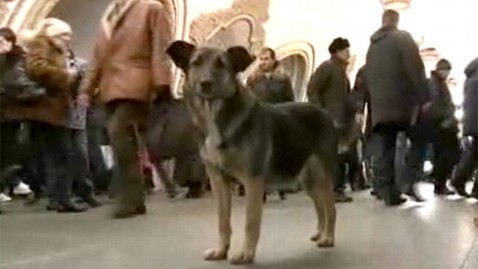
(ABC)
3 Videos Underline New Questions About What ‘Wild’ and ‘Tame’ Really Mean
Nature’s Edge Notebook #12 –
Observation, Analysis, Reflection, New Questions
Stray
dogs figure out how to use Moscow’s subway system to get downtown to
neighborhoods where the food is better.
For
years, a house cat in England takes the public bus to get around town,
unbeknownst to its owner.
A
jungle leopard in India, needing to cross a swollen river with its cub, gets a
man to ferry her and her cub across in his canoe.
Dolphins
at a dolphin show in Hawaii instantly figure out a mistake their trainers have
made and cover for them pretty well, preventing embarrassment all around.
The
wild ocean cousins of those “tame” show dolphins have a long-standing
partnership with fishermen along the coasts of both Brazil and Bengal that
means more fish for all.
In
Western Australia’s Shark Bay, wild dolphins being studied by scientists from
Harvard, appear themselves to be studying the humans — including this reporter.
These
anecdotes may at first seem to be simply entertaining aberrations — fun animal
stories of unusually “tame” — and surprisingly intelligent — animals.
But
scientists are now collating and comparing so many of these stories — literally
thousands from around the world, often from what we’ve traditionally called
“the wild” — that it’s all raising new questions about what the words
“tame” and “wild” may really mean, and how any difference between the two
can be usefully described.
These
anecdotes are also at the heart of an explosion in the study of animal
intelligence and consciousness, a scientific revolution that promises to help
answer ancient questions that still persist about the nature of our own human
intelligence and consciousness.
They
include stories from around the planet in which all sorts of wild species
accommodate to the many disruptions of encroaching humanity with imaginative
flexibility and self-aware decision making that leave scientists searching for
explanations.
Of
course, the wild animals have little choice but to accommodate us, since if
they are to live, they must continue to seek food each in their own way,
regardless of any human presence.
But
these myriad encounters are also revealing unsuspected powers of perception and
adaptation — and emotional intelligence — in all sorts of fur-covered brains
and deep-diving bodies.
They
are transforming notions not only of a presumed superiority of human
intelligence, but of the uniqueness (now increasingly in doubt among some
experts) of human consciousness.
If
wild animals seem to intelligently allow themselves to become more “tame” in
our presence so that they can go on surviving, does that make them any less
“wild”?
“Not
tamed, but habituated,” is how the guide in our recent hunting foray in Botswana with Africa’s
endangered Wild Dog put it.
He
not only took us on a truly wild chase, careening through the bush with
the wild dogs (a.k.a. the painted wolf), that ended with the capture and
devouring of a hapless baby impala (which meant wild dog pups could be fed),
but along the way we also captured many glimpses of animals — including hippos,
lions, jackals and hyenas — pursuing their “wild” behavior in their ancient
homeland even while in close proximity with and accommodation to our
human-filled open Land Rovers.
Three
“Nature’s Edge” video segments below, starting with the Moscow stray dogs
who’ve mastered the subway system, show some of these remarkable examples of
animal thinking and accommodation that are now so engaging scientists.
We
are guided through them by “Nature’s Edge” regular Eugene Linden who’s been
writing about animal intelligence studies worldwide for more than 40 years.
They
are part of our ongoing series “Thinking About Thinking With Eugene and Other
Animals” (a title that honors the slim and timeless classic, “My Family and
Other Animals” by Gerald Durrell — a childhood memoir of great seriousness and
comic genius).
“The
world is becoming a zoo,” says Linden — speaking from the human point of view.
We
have penetrated so many wild places, that animals have less and less option but
to roam and hunt in among us.
But
from the animals’ point of view, we’re the wild ones, so to speak, among whom
they must now try to keep their own, often genetically determined,
“civilizations” intact, their ancient evolved patterns of life and survival.
And
scientists are now discovering the remarkable (to us) intelligence and apparent
consciousness with which wild animals are doing that.
Linden
says these discoveries involve overcoming natural human prejudices: “Since we
usually define intelligence in our own terms, humans will tend to assert our
intelligence’s superiority over any other species, even if we can’t agree on
what it actually is.”
The
three videos below culminate with an influential insight about animal
intelligence and consciousness from the late ethologist Donald
Griffin.
Griffin
led scientists to admit that far from being the dumb creatures many thought in
the 19th century, incapable even of pain, animals, even very
simple ones, may have developed “consciousness” in some form or other from the
start because it is simply the easiest — most efficient — way for evolution, in
the form of Darwinian natural selection, to advance.
But
first, meet some stray dogs who have mastered the Moscow subway system — as
well as Eugene Linden, and that English cat riding the bus.
Sometimes
editors know they may have a real story when after hearing rumors of it and
then assigning it, the correspondent reports back that it was not hard to find.
That’s
what ABC News correspondent Alex Marquardt told us over the phone a few days
after we told him of reports we’d seen here in New York that some of Moscow’s
stray dogs had figured out how to use the subway to get from the roomier
suburbs where they lived to the heart of the city, where they had a better
chance of turning humans into a food source — just like the millions of human commuters
who use subways every day to get from their homes to where they work.
Alex
told us that after speaking to the two Russian biologists who’d been studying
these dogs, he linked up with his cameraman and joined the midtown Moscow
commuters heading down into subways to see if it was really true.
Sure
enough, before long, not hard to find at all, there she was…
Take
a look:
In this next video segment, we learn that during his 40 years
traveling the world to talk to animal trainers of all kinds and to scientists
who try to figure out how to describe animal thinking, Eugene Linden began to
see the biases humans have often had about animal thought.
Until
recently, he says, many scientists thought of animals as “failed humans.” Some
even argued that animals couldn’t really feel pain.
After
telling us of a famous New York City “tame” zoo otter who found ways to extort
rewards from others — presumably a tactic otters can also use in “the wild” if
they want — Linden spoke of the engaging behavior of a leopard in the Indian
jungle who needed a favor from a man who lived not far from her den.
When
the nearby river flooded, this leopard, seeking to get her cub across to
shelter, led the man to his canoe, stepped into it, looked over her shoulder at
him, and somehow conveyed what needed to happen next — as this video shows.
And
on a foray into what this reporter now thinks of as, in a sense, the civilized
world of the so-called “wild” dolphin (civilized by dolphin standards), when we
took a crew to Western Australia’s Shark Bay, we became aware of our own biases
about who was studying whom.
In this third video segment, we hear how, in an act of remarkable
resourcefulness and possibly even empathy, two dolphins in Hawaii helped their
trainer, the scientist Karen Pryor, save face.
This
is just another of the thousands of anecdotes now being compared and studied
that are giving scientists around the world second thoughts about the nature of
animal intelligence and the uniqueness (or not) of human consciousness,
whatever that may be.
The
nature of consciousness is still hotly debated among scientists, philosophers
and psychologists.
The
late scientist Donald Griffin advanced this debate. He broke through
scientific presumptions and confusion with a deceptively simple insight about
why Darwinian evolution would select for consciousness in all sorts of animals.
Not
that this insight is suggesting there are “termites doing crossword
puzzles,” as Eugene Linden says here (and why would they want to?) but it does
seem to make the mystery of awareness and consciousness all the more
common — although no less mysterious.
Linden
— and Griffin — point out that for evolution to try to “hardwire” a
species for every dangerous or life-giving eventuality that might come down the
pike in this often wild and chaotic world would be cumbersome, if not
impossible. Who knows what new developments the future may hold?
These
new insights may give new hope about the flexibility with which even humans
might adjust to meet new dangers and opportunities.
If
other species turn out to have minds that are not so “hardwired” and that
display imaginative, compassionate, self-aware and flexible decision making,
then, some scientists now suggest, (turning the tables of interspecies
prejudice with a little wry irony) we humans may also share such splendid
capacities — at least in our better moments.
Video: Watch giant cuddly cat help commuter travel to work in bizarre
Japanese chewing gum advert
·
By Ben Burrows
Gum manufacturer Fit clearly know
the internet's fondness for all things feline - and has delivered in 10ft-tall
fashion
Manufacturer Fit clearly know how much the internet loves all things cat-like, and have gone the whole hog with their latest campaign.
Pictured at the beginning of his morning commute, a businessman decides to freshen his breath with a stick of gum.
What follows sees a giant 10ft-tall cuddly cat appear, lift him in the air, and take him on his way.
The man seems delighted with his new companion as he journeys to work in unorthodox, feline fashion.
THE BEST EVER- WORLD
FAMOUS FENTON....
JESUS CHRIST- FENTON
JESUS CHRIST IN RICHMOND PARK: ORIGINAL UPLOAD
----------------
Fenton's official book - FIND FENTON!
-------------------
Jurassic Pa-FENTON!!
FENTON THE DOG - STAR WARS: THE FENTON MENACE.
Japanese Pizza Hut
Commercials featuring Cat employees
--------------




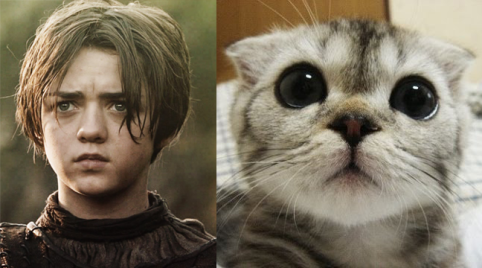
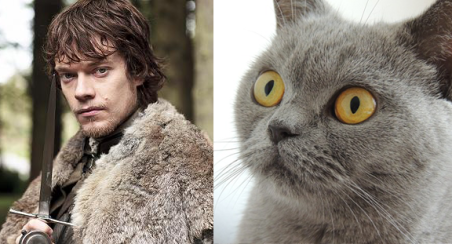

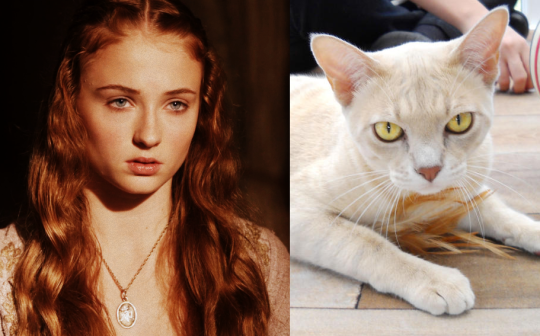
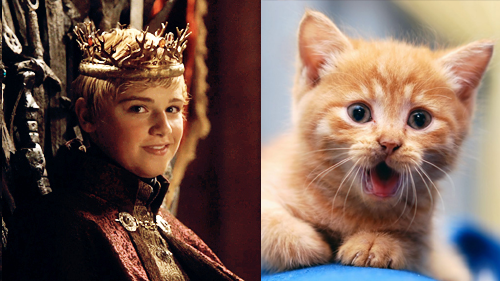
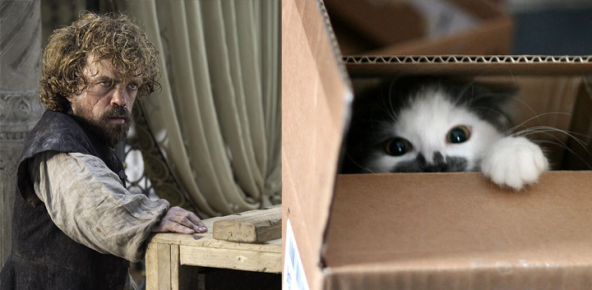
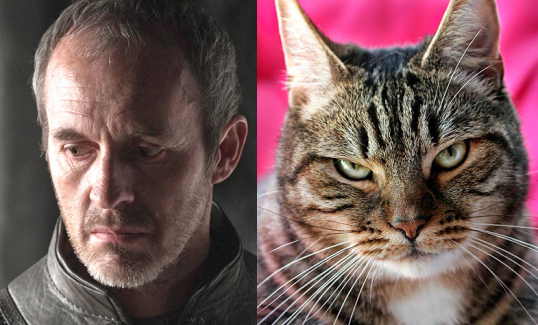
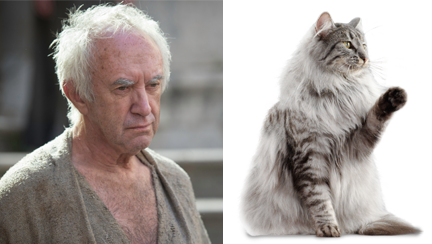
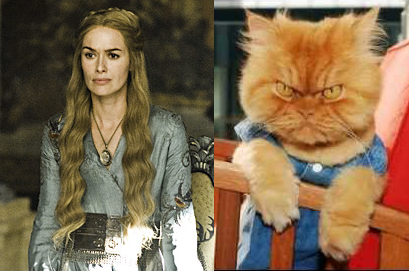

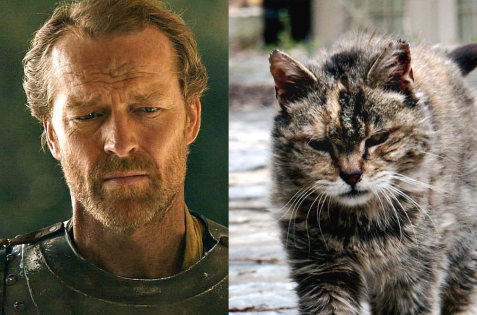
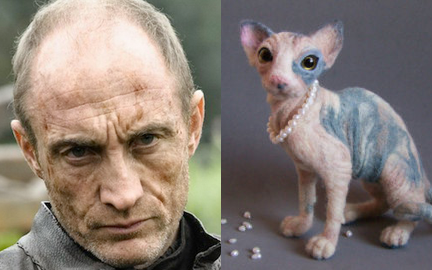
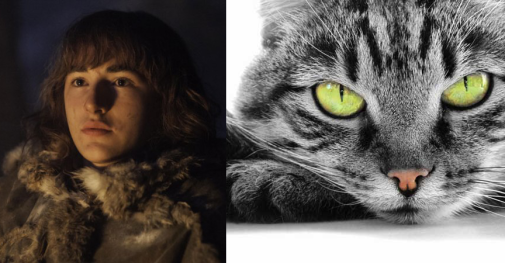

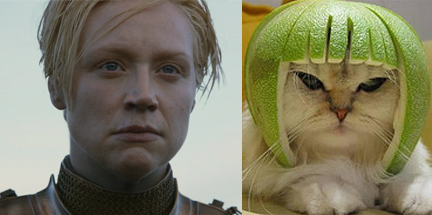
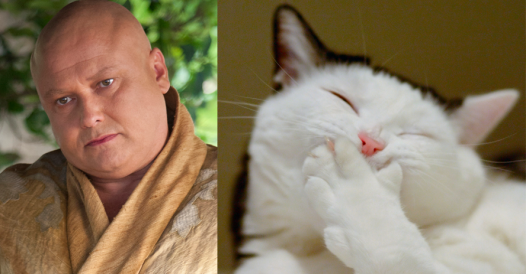
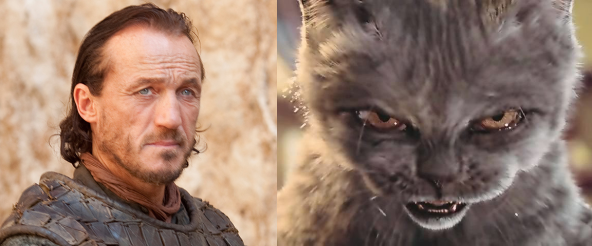
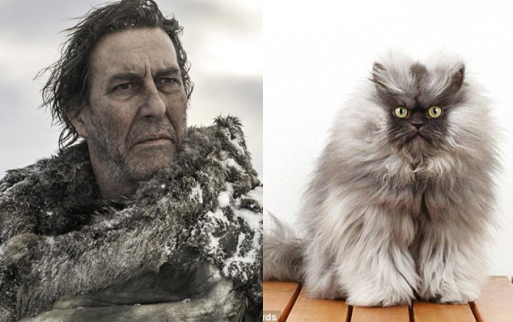


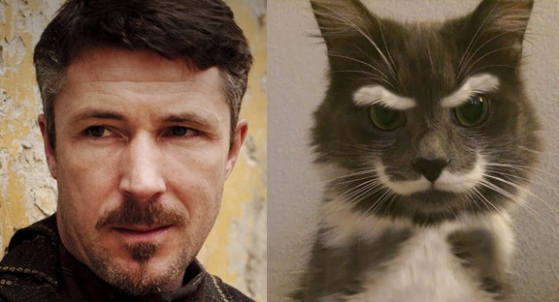
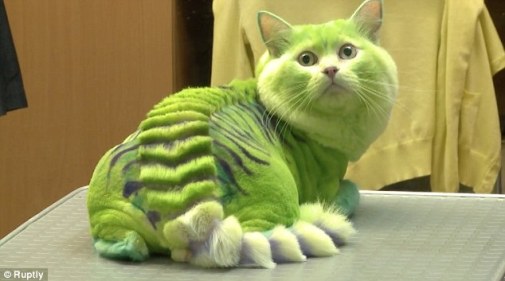











No comments:
Post a Comment
Note: Only a member of this blog may post a comment.